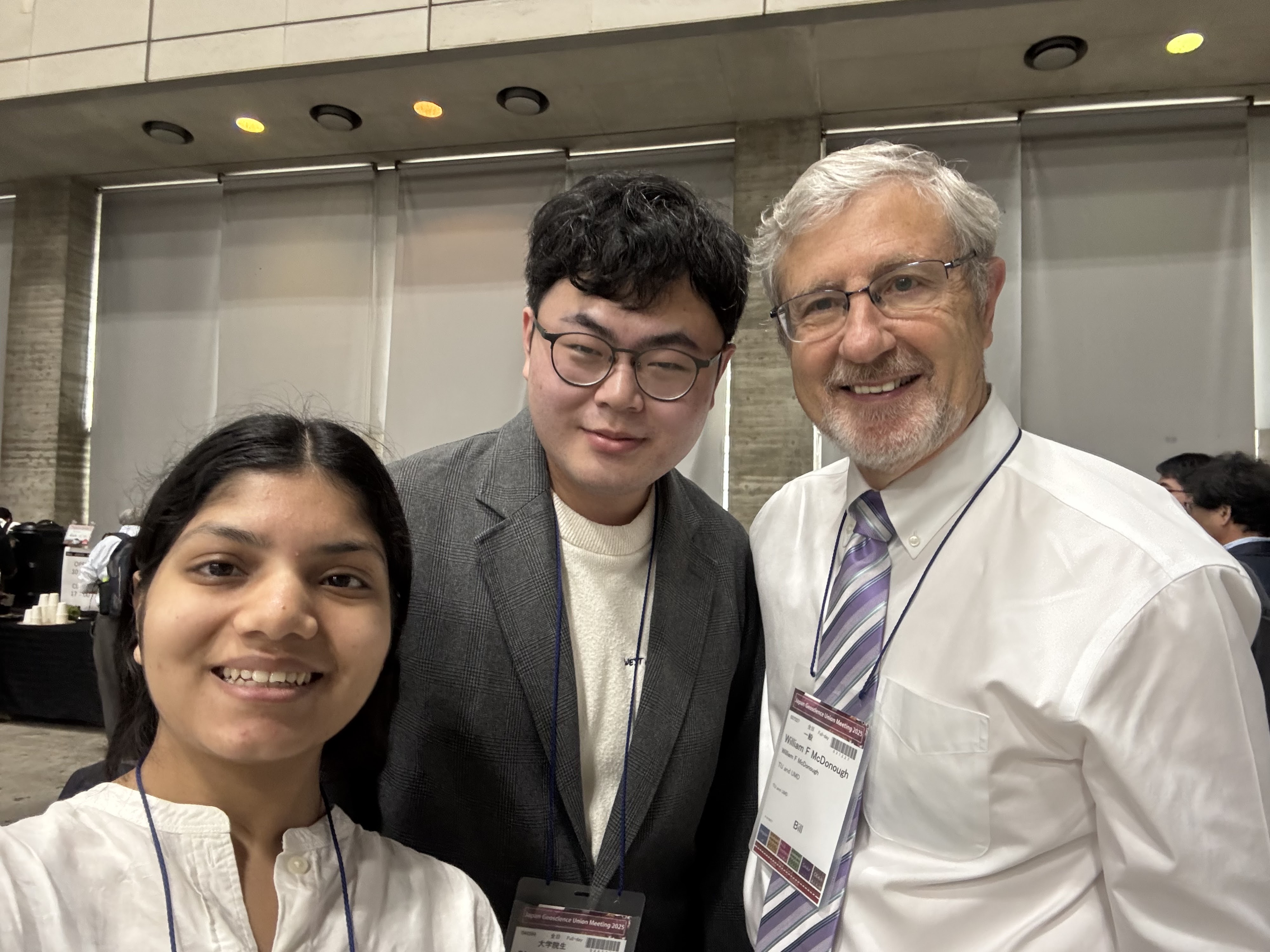JpGU 2025 participation report

I recently participated in the Japan Geoscience Union Meeting 2025 (JpGU 2025) in Chiba, Japan. JpGU meeting is the largest geoscience conference in Japan, attracting several thousand researchers from around the world across a wide range of Earth and planetary sciences.

At this meeting, I gave an oral presentation on May 27 titled “Theoretical insights into Earth’s heat from geoneutrino detection by Ocean Bottom Detector: role of angular resolution.” According to our calculations, if Ocean Bottom Detector (OBD) can achieve an angular resolution of around 30°, we can be confident in identifying the Large Low Shear Velocity Provinces (LLSVPs) through geoneutrino detection and estimating their approximate U and Th contents, which would provide crucial new insights into the Earth’s internal heat budget and mantle composition, advancing our understanding of Earth’s deep structure and geodynamics.
After my presentation, I received numerous insightful questions and comments from professors, researchers, and fellow students. These discussions were incredibly valuable and gave me several directions to explore in the future. Some of the key feedback I received included:
- On the chemical composition of LLSVPs: Prof. Eiji Ohtani and Prof. William F. McDonough suggested trying different chemical models to test the sensitivity of results.
- Core contributions: Some asked why I didn’t consider the Earth's core. I explained that due to geochemical constraints, it's unlikely to contain significant U or Th.
- Seismic tomography integration: There were suggestions to incorporate seismic tomographic models to constrain the Earth's interior. While this approach is not easy, a more accurate mantle model might be achievable through reasonable mapping from seismic velocity structures to compositional variations.
- ULVZ discussions: I learned something about Ultra-Low Velocity Zones (ULVZs), which may coexist with LLSVPs but are too thin and low in U/Th content to be detectable via geoneutrinos.
- Outreach and future collaborations: I also connected with some junior students who expressed interest in geoneutrino research.

Moving forward, I plan to refine my Earth models and improve the precision of my calculations, particularly focusing on the relationship between angular resolution and the detectability of mantle structures such as LLSVPs. I aim to present the updated results at the upcoming TAUP 2025 conference in late August, where I will report the findings in a formal presentation and submit them as a conference proceeding for official publication.